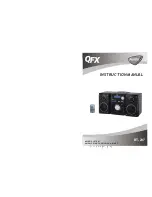
SilverBack V Camera-Mountable Fiber Optic Transmission System
© 2021 MultiDyne, Inc.
Made in the USA
Page
15
Signal I/O Connections
4K Camera Video Connections
The 4K CAM outputs on the base unit are highlighted in blue and are capable of outputting single-link,
dual-link, and quad-link SDI formats, supporting SD, HD, and 4K resolutions up to 4Kp60. Connect the 4K
CAM outputs of the base unit to the desired facility destination. Depending on the type of camera and
video resolution, up to four HD-BNC cables may be needed.
HDBNC
#
Signal
4K Application
1
12G/6G/3G/1.5G with gearbox
Single Link
Dual Link
Quad Link
2
6G/3G/1.5G with gearbox
X
3
3G/1.5G with gearbox
X
4
3G/1.5G with gearbox
The base unit video settings will need to be set to match the camera's output video format. Please refer
to the configuration and operations section for more information.
Secondary SDI Connections
The SilverBack V base unit is equipped with one or more secondary SDI paths, which function as camera
sends, returns, or both. These SDI connections only support data rates up to 3G (they are not 6G or 12G
capable).
The number of secondary SDI connections on the base unit and their directions varies from model to
model. These secondary SDI connections on the base unit are highlighted in green, and the label
indicates their direction.
Reference Sync Connections
Each camera chain in the SilverBack V base unit has a dedicated reference sync input. Connect the
desired sync reference to these ports. This REF input can accept an analog NTSC, PAL, or HD tri-level
signal. On older units, these inputs are loop-thru and require a 75-ohm termination on the loop-thru
connector or at the end of the loop. Current units are internally terminating and do not require external
termination.
If the camera requires SDI reference, use one of the 3G-SDI return inputs on each of the camera chains
of the base unit.
Timecode Connections
Each camera chain in the SilverBack V base unit has dedicated timecode inputs and outputs. Connect
timecode inputs and outputs to these ports, as necessary. Note that in order for a camera chain in the
base unit to output the camera’s timecode, the direction of the timecode connector on the camera unit
must be set as an input.
















































